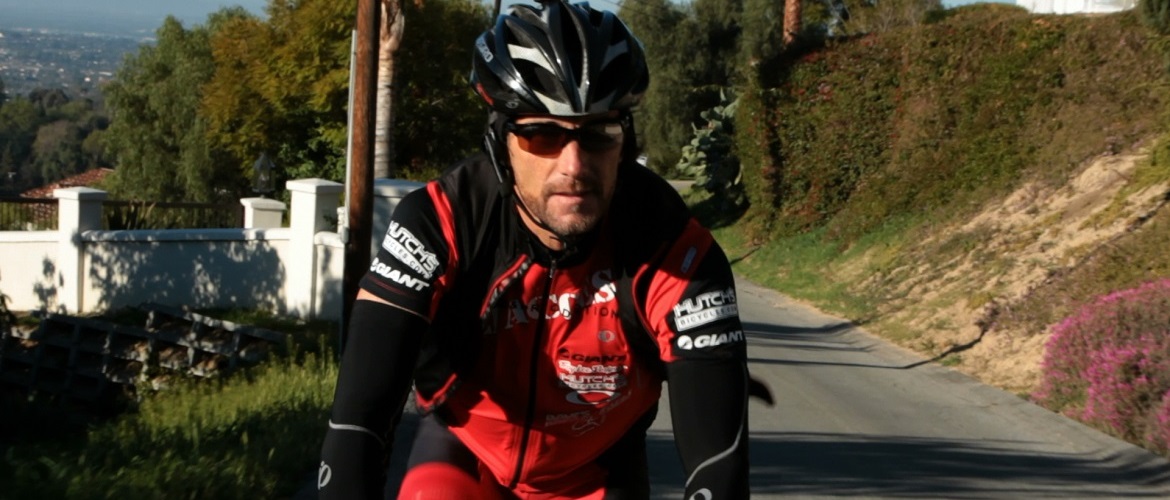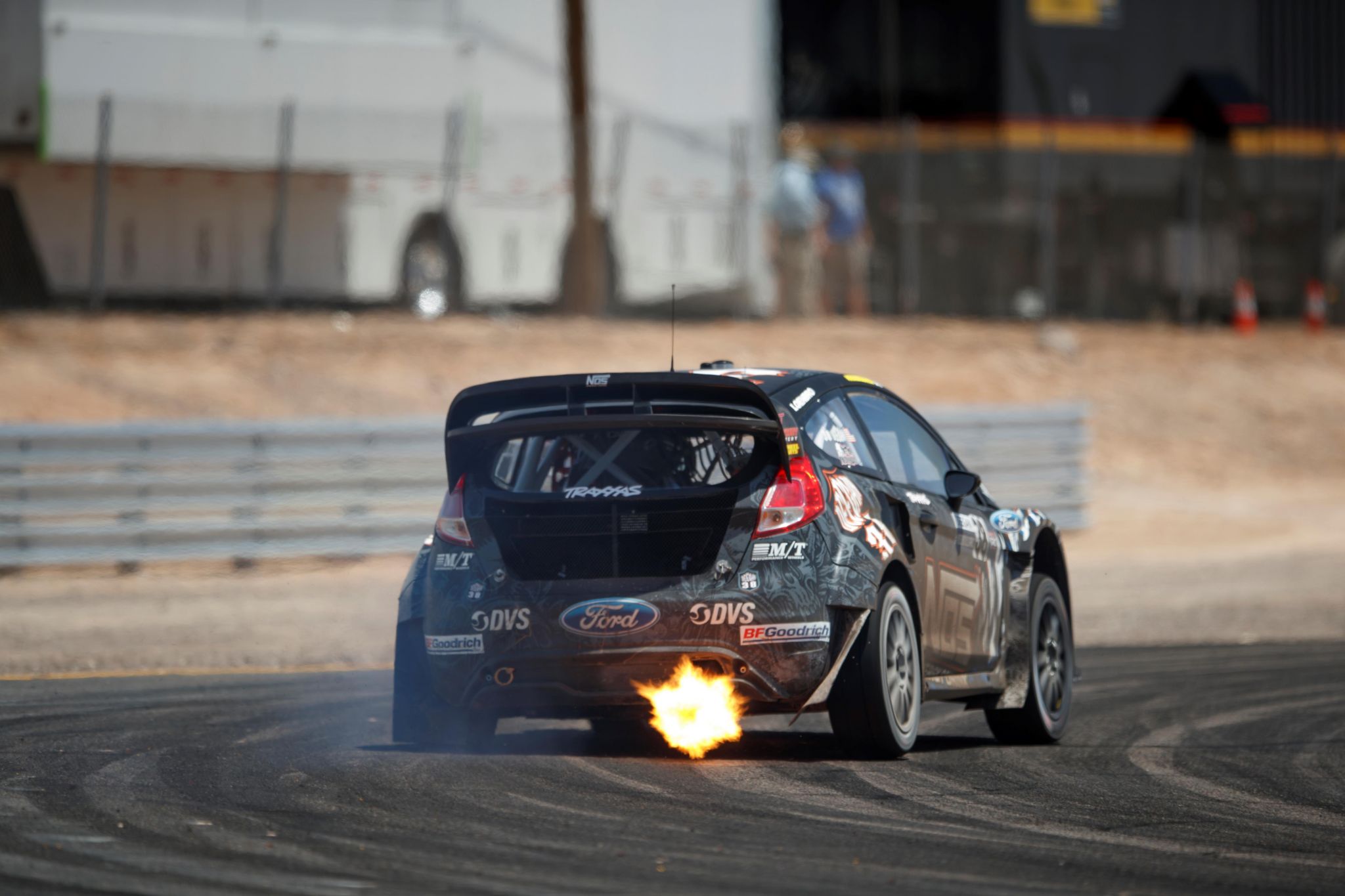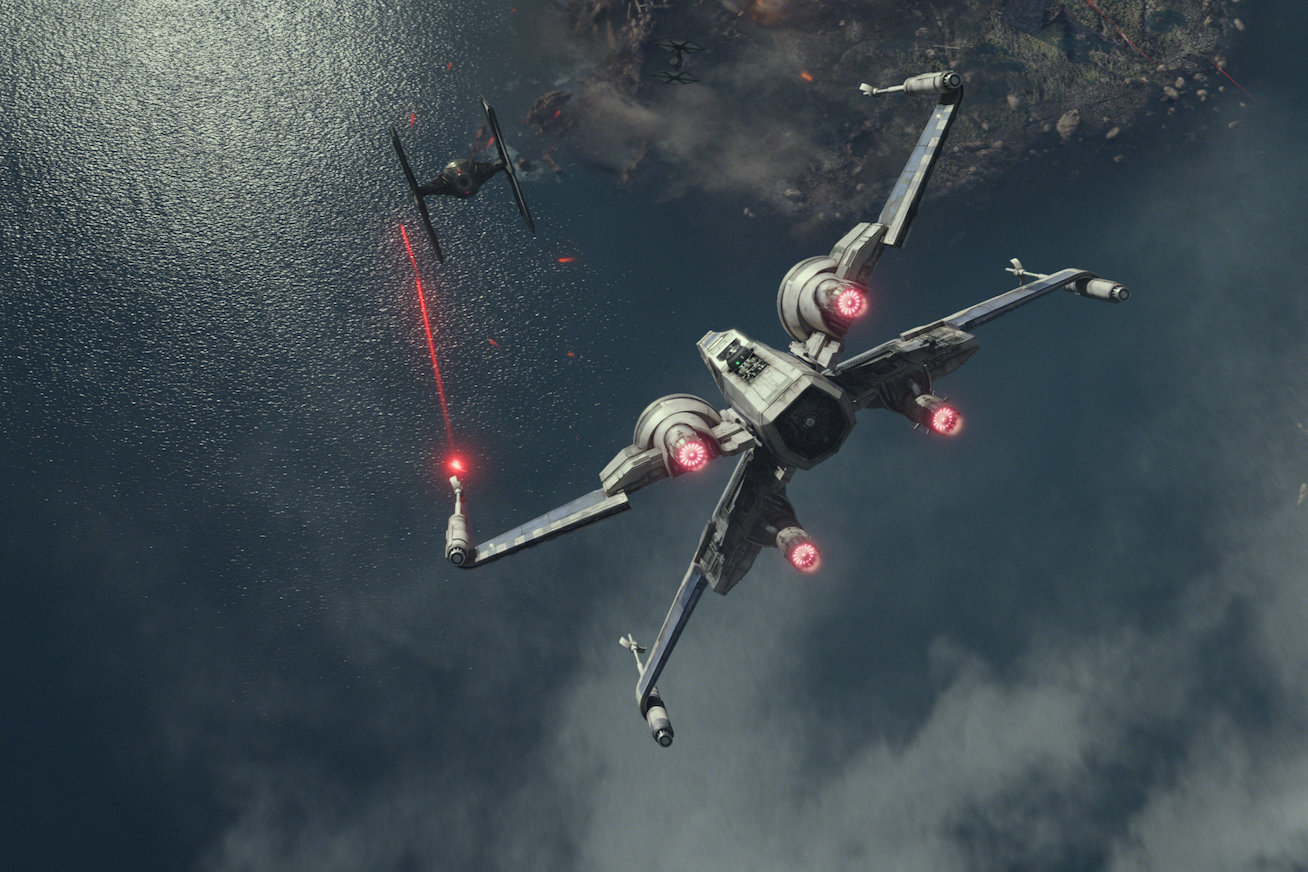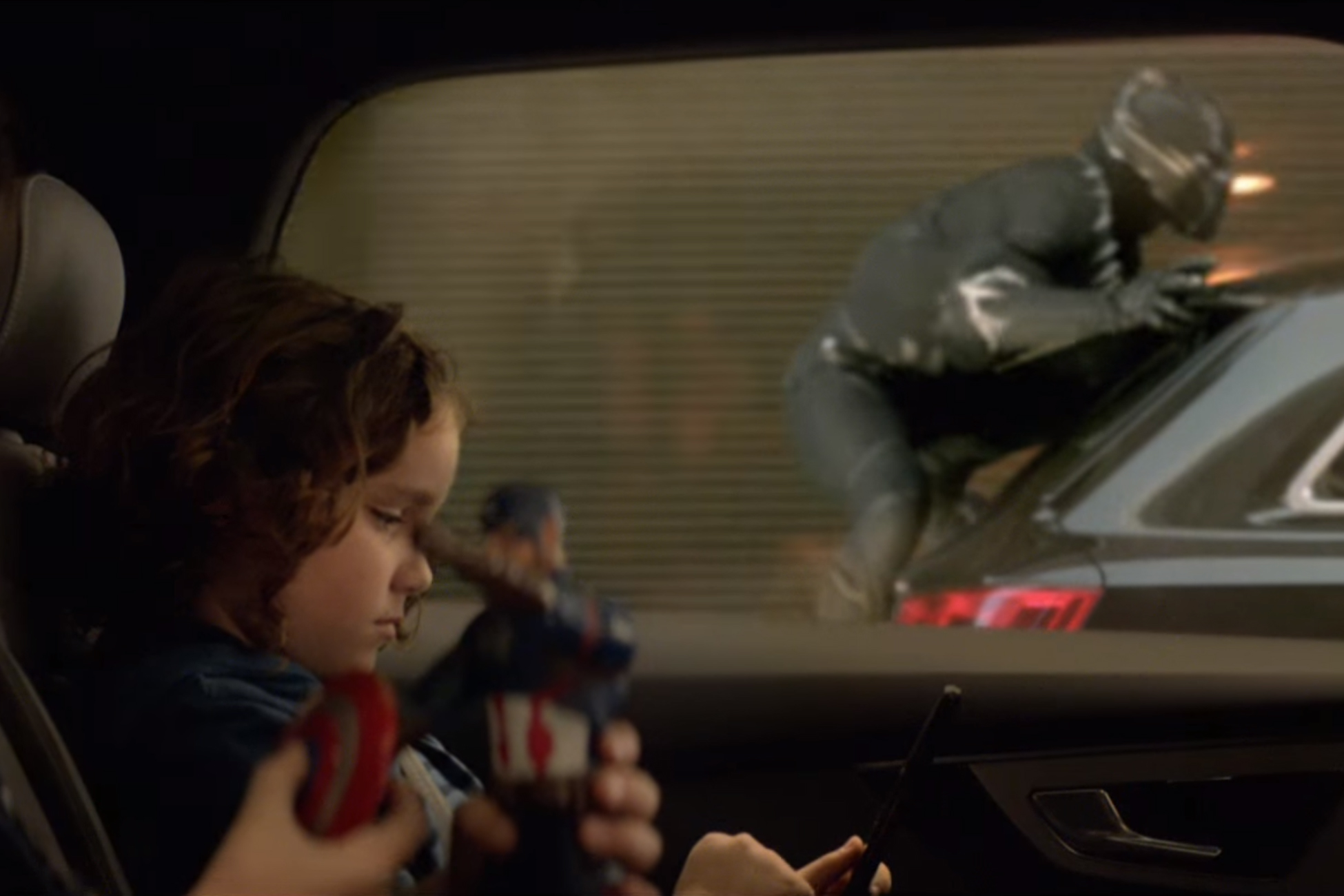Micky Dymond has spent most of his life in the pursuit of motorcycle championships. He made his name winning back-to-back AMA 125 National Motocross Championships in 1986 and 1987. Boyishly handsome with exceptional talent, a catchy name and heavy metal hairdo, Dymond’s star shone brightly but it wasn’t meant to last. He stepped away from competition in the early 1990s but didn’t turn his back on the sport completely. Dymond used his knowledge and experience to help nurture Freestyle Motocross in its infancy by designing race courses for early X Games, in addition to some of the first jumps for Metal Mulisha. He eventually returned to racing and won an AMA Supermoto Championship in 2005. That same year he rode his KTM to victory as a rookie at the Pikes Peak International Hill Climb and set a new course record.
These days Micky Dymond is a very busy man. He still competes in motorcycle events including Pikes Peak and is the Stunt Choreographer for the Nuclear Cowboyz. However he’s also very passionate about another sport on two wheels – endurance cycling. As the name implies this is an endurance sport where athletes ride distances up to and well-beyond 125 miles. This June Dymond will be part of a 4-man team, The Legends of the Road, to compete in the Race Across America, the “World’s Toughest Bicycle Race.” They have a maximum of nine days to race non-stop from Oceanside, California to Annapolis, Maryland and Micky Dymond cannot wait to get started!
MLAS: Many athletes in motorsports train with cycling, but endurance cycling is so physically demanding and time consuming. What led you to start doing it?
MD: It was a combined desire that I wanted to cycle for longer periods of time; I liked the idea of and the adventure of it. I never really thought of competing and I actually in the beginning didn’t even know that there that many people that did it. We’re looking at like doing the ride across the country or something more than a full day on a bicycle ride, but the more that I stumbled upon some books, some stories and I read one that was called Hell on Two Wheels. It was all about the Race Across America and there were some characters in it that I really became – I was fascinated reading about Jure Robic who has won the Race Across America quite a few different times, and reading about their adventures and some of the stories that were in that book really fascinated me and made me want to do something similar. My beautiful girlfriend, Brenda Lyons, came across the project that was with the Race Across America and surprised me with an opportunity to host a video series and also train and participate in the race myself as part of the documentary video series to promote the Race Across America as an outside person who can bring new awareness and new focus to endurance cycling. So that is pretty much how this project got started, and I took it on and I’m really excited that it’s really going to happen now. Getting it done is the next thing.
MLAS: Was that book Hell on Two Wheels by Amy Snyder?
MD: Yeah! It was a great book and for me it was just the stories that surrounded Robic were – I can almost feel the excitement just thinking about because it has some trauma in the end because Robic [was] killed in a training ride, still with many unfinished goals that I think he wanted to continue and achieve more things but many of the characters are people that I’ve gotten to know a little bit during this project. Ultimately, even though I’m in a situation with three other guys that are much more fit and younger and suited and accomplished, all three of them in cycling as well as their other sports, the ultimate goal for me is to get to do (the race) solo in 2015. So that’s ultimately what I see as my big goal. That’s what I’m really working for but in the meantime the new dynamic, it’s created some newer and more exciting short-term goals and to help create a better cyclist in me.
MLAS: Your team includes Ben Bostrom, Dave Zabriskie and Dave Mirra. How did you guys come together to form The Legends of the Road? Did you know each other before this project?
MD: Well in the beginning I was going to do (the race) solo in 2014 but I just wasn’t fit enough. I didn’t have the schedule to make it happen, so myself and the production crew for Riding the Line, which was the video series that I followed in 2013, discussed the option of doing a team in 2014 so that I could still do Pikes Peak ‘cause I’m going to go back and do Pikes Peak with Ducati this year and have like a bigger sponsor, a bigger support system than I had last year and even a better chance to go and have a good ride up there and maybe do a record. I have a great bike and a great team. So to do that immediately after doing a solo in Race Across America was not just going to be possible and we discussed doing a four-man team. The first person that I really went after was Ben Bostrom who I had another event, a motorcycle race in Europe. I just pitched him the idea and he was definitely interested and he’s quite a cyclist, and quite a genetically fit person to do this, you know? He’s just one of those people that’s a great cyclist. It’s really difficult to ask a person to do a bicycle race that 3,000 miles. It doesn’t fit with a lot of things that they’re doing so in a sense it was, “Are you kidding?” but he did seem interested; and I sent him a lot of video(s) and a lot of really feel-good stuff about it and motivational stuff, stories, photos and he said, “Just keep bugging me and I might change my mind” and he did. He was the first one that I got onboard and he said, “I’ll do it. I want to do it.”
So then I think maybe in the process of working on him I started working on Dave Mirra; and Dave was another one that was like, “Well it sounds great and it’s really cool but I have other things I’m doing so…” At one point he declined and then I just said, “Well just keep thinking about it. I’m not going to pressure you, just keep thinking about it.” He changed his mind and it became a bigger draw to him through just the little bit of time, but I sprinkled in some videos and shared with him the things that motivated me to want to do it. That left Dave Zabriskie was somebody that Ben had talked to about it and said, “Hey I would be interested.” but he was the biggest longshot I think out of the group. Nobody wants to do a time trial across the country and it came together and I finally got a phone call with Dave and it didn’t take long for him to decide. I sent him the videos and stuff too. He watched it, and I didn’t make any big promises and really, there’s no big draw for any of these guys other than the adventure of it. There’s not a ton of money to be made. There is the ability to reach out. Dave Zabriskie has a foundation (http://yieldtolife.org/) about road safety and it’ll bring a ton of awareness to it and it’ll help that too, but other than that nobody’s going to make a bunch of money. In fact, we’re still trying to put money together to just get it done. Cover the production cost of just the race team itself as well as a production crew to document the whole project ‘cause that would be a tragedy if we didn’t have that. The only real promise I made to anybody was that we’re going to have a blast and it’s going to be a lot of fun and it’s going to be an adventure. Not a bucket list item but something bigger, you know? An Everest, in a sense.
MLAS: I watched some episodes of Riding The Line on YouTube and was very impressed by the level of determination and perseverance the riders showed, riding in rain and wind, certainly not ideal conditions for cycling at all. It’s definitely not for everybody but it’s fantastic! What do you have to assemble to support a team for this race?
MD: Yeah, even a solo effort’s going to require approximately between eight and ten people and a couple vehicles, and you’re still logistically planning to travel from Oceanside in California to Annapolis, Maryland, along the way at fifteen to twenty-five miles an hour the entire time. Along the way, you’ve got to manage fuel stops and food and laundry and then manage actually communication with the rider. To do a team, it just gets a bit bigger and more complex. If you have the budget to do it right, a four-man team like us, we’re looking at two crews working with two riders each and leapfrogging each other. Trading time on the road because the clock starts when you take the first pedal stroke and it doesn’t stop until you make the last one so we’ll never not have a forward progress on the road. There’ll be a rider pedaling at all times 24/7 or 24/9½ hopefully.
It’s also important to rotate. It’s a pedaling contest, a bike race and that’s (a) contest but it’s also an eating contest, a sleeping and resting contest – all these different things together and doesn’t mean just for the riders, but for the crew, the drivers and everybody’s that’s involved; and because you’re on a live course. It’s not a locked-down course. It’s the highway. There’s different sections of the road that you share with different vehicles that are not as safe as others so it’s a spectacle, and you add in all the things like the weather and days and nights, and hazards and fatigue and the possibility of sickness or injury. It’s just quite amazing and the one thing that I have gathered from most of the people that have done this race more than once is that they’re taking away something different every time they do it. It’s not like something you can prepare for and it’s just routine. You have your checklist and your gear and your supplies and all that for sure but there are as many different things that can happen just from the start. Maybe you get a flat tire in a chase vehicle? From what I saw last year following the race there were a few accidents that happened with cars in the public. A rider hit a deer and there were all those people having problems with conditions that only exist in this race. People that lose the ability to use the muscles in their neck and their head’s bobbing and they can’t look upright and see the road so they build an apparatus that holds their head upright so they can see and keep going. I guess there are many things logistically that I don’t even know so I’ve been lucky enough to get some help from the very best people that have done this event, and the most successful at it.
I’m still putting together the final touches to the crew and the equipment, and because it’s become a little bit more my project than just as a rider. I’ve put a lot more into this now and we started The Legends of the Road. We needed a name and we threw around names for a couple days and we had to decide on one and Dave Mirra came up with The Legends of the Road. We were able to lock it down and we’ve been able to attain a couple sponsors that have been able to help us. A lot of people want to help and so we’re growing. I wish we had more time but we don’t and I’m just having a lot of faith that it’s going to come together and be everything that it’s going to be. There are so many things, so many things to worry about and try to prepare for.
MLAS: How do you train for an event like this? It seems to be a way of life and clearly not a hobby.
MD: It isn’t a hobby anymore and it hasn’t been for quite some time. I believe it was like 2009 that it became, you know, almost a need to do it daily. I choreograph a traveling show called that’s called the Nuclear Cowboyz and I’m actually in Georgia right now getting ready to do a show tonight. It’s a freestyle motorcycle show and gives me a lot to do between November and April. It also gives me a lot of days off during the week, like approximately three days where I can pretty much just cycle and focus on cycling. On the road, it may be a little bit more intense than that. I think cycling is like seven days a week. We manage to work and do the show, and a lot of days – like last night I did my training day on a recumbent bike in a hotel gym and I’ve had to use other means to get my training done. I have a great coach, a guy named Dean Golich out of Colorado and he designs my daily routines; and I keep track of my training log with him as well as my meals.
My girlfriend Brenda is sharing knowledge. She’s kinda laughing at me ‘cause she’s listening to me right now but she’s helped guide me. You know I think she’s responsible for a lot of the changes that I’ve made and she’s also created a lot of the monster that I’ve become, in terms of being more I don’t know, not strict but more disciplined to get my work done. It’s a different life now that I’ve become accustomed to living but a better one and it’s just a better way for me to live, and has created [a] better direction to go. I don’t think that cycling will ever be something I step away from. It’s become such a huge undertaking to try to do something [on] this type of a scale instead of just do some work for a couple weeks and then something and move on from it. It’s more deeply embedded now. It’s more rewarding for me both physically and on another level. I really enjoy being isolated and being able to become more inwardly driven where I believe my better thoughts are. I’ve developed a need for it in a way, just something that I need. I really look forward and I’m so focused on being in that place where I’ve never – I mean, I’ve touched it a few times you know? I’ve done big rides where I’m on the bike for a long time but if I really challenge myself and I put myself physically into some type of a tough spot? I just really think that it’s just barely touching where I’m going to get to be on that big solo event. So that’s super-exciting to think of going there and I’ve kind of become focused on that and after I’m done the work and the things I need to do and paid the bills and all that, that’s where I really want to spend my time.
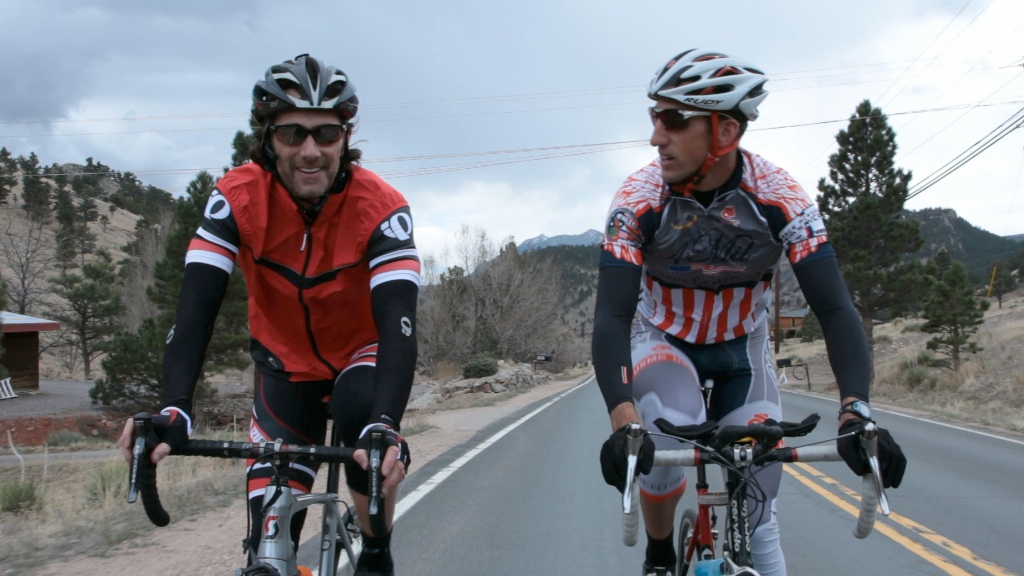
MLAS: Physical preparation is one thing but how do you mentally prepare before riding such far distances? Long distance runners sometimes have moments when they feel like they’ve pushed past physical pain and are just flowing along. Is that kind of what you go through?
MD: In a sense, yeah. It’s trying to go beyond what you know, that place you’re used to going and not going beyond. What I witnessed watching a few of the guys that [did] the solos this year and getting to know some of them, they just went to places that only they know what it’s like. To get to that place where you want to quit and then go not just beyond that, but beyond it again and again and again. I think we’ve all had those things in life that you’ve got to a point where you stop too soon. You let off and you feel that it’s too soon or you gave up and those are the things that, I guess you don’t really remember them all the time but they don’t really leave you. You always have them and this is like really going there and keep going. There’s always been things that I’ve read and witnessed and know, to talk about evolving into the person that you’re ultimately destined to be and all that stuff. (laughingly) There are tons of clichés to talk about it. There’s the possibility for things to happen in life that are really spectacular and amazing, even at our day and time as civilized society. People get put to the test in many ways and this is just a more practical way to physically go beyond our normal limits, I guess?
It’s not normal for people to go without food, sleep and to physically push themselves to this level. I think this is the only event that’s like going to last more than 24 hours. You might get to a point of suffering and you’re only two days into the race where you’re just finished and we’re not going to be able to quit, you know. I know that guys that are doing this. There’s no going back! (laughing) You’re going to be committed no matter how you feel and preparing for it is pretty serious. You’re not really cheating yourself at all and I haven’t been in my training, even though my training’s been all over the map because of my schedule. I travel every weekend so I’m trying to keep from getting sick and keep focused to get to this point where I can be prepared to do this. It’s been a ton of work but it’s also been easy to focus on it and I’m hopeful that I’ve covered everything that I could possibly cover. But still there are so many different things that are going into it and the way that I think and feel about things are also becoming more loud, like the volume just got turned up in my life because I’ve got this purpose to prepare, and be prepared to go to this place and I’m so excited and it’ll be so exciting when the gun goes off and here we go! As you can tell I can go on and ramble about it but it fuels me up to want to do it!
MLAS: As mentioned in the final 2013 episode of Riding the Line on YouTube, you did the RAAM Challenge Sacramento 200 mile event but needed to do two in order to qualify for the 2014 race. That’s how it works, right?
MD: That was the first one that I did and I had a plan in the beginning of the year that I would do a 200-mile and a 400-mile. Because of schedule changes and the fact that we were going to do a four-man team, I didn’t have to do the 400-mile qualifier and it was a matter of scheduling because I was doing Nuclear Cowboyz. So I didn’t get to do the 400-mile but I went and did the 200-mile race which turned out to be like 230 miles and it was in Sacramento. It was something that I was like really not prepared (for) but I went and filmed throughout the weekend and episode of Riding The Line while I was doing it. (laughing) Actually the race was 225 miles but by the time I had crossed the line, I had done 230 because I got a little lost a few times. I didn’t do it incredibly fast. I took it in and we filmed during it but I still won the race and that was the biggest ride I’ve done to date really – 230 miles. It had quite a bit of climbing in it too. I don’t know how much off the top of my head but there were a few good climbs in there and it really was a long day on the bike; and that was the first day that I worked with a car following me. Trying to learn about diet and what I could eat. I did ok with that as well and we came out ok and it was a good day. It was super-hot! It was over 100 degrees. A couple of the other guys had some heat issues. If I went back I’m sure I would do it a lot faster but it was a good first race and I came away thinking, “Ok, this is for me!” I didn’t come away thinking, “Man, that sucked.” I came away thinking, “This is good.” I liked it. So I guess the poison got in me and I became more focused on it and not deterred at all.
MLAS: What kind of impact has endurance cycling had on you as a motorcyclist?
MD: When I was racing, I did train and I trained pretty hard. At a couple points in my career, I really got a reputation for being not a training person and lazy. I think for a lot of reasons I didn’t have to work maybe as hard as some of the other guys. Basically I think I had a better riding style and a better natural riding ability than a lot of guys so I didn’t go out there and just hammer stuff. I was more finessed. But I didn’t really understand the benefits of the training that I could have done. Not only for being fast and winning races but for having a longer career without having injury and sustaining my potential as a racer. There’s this part inside me that is almost like aimed to redeem myself and also to make up for what I missed the first time around. I understand things differently because (of) the toughness in racing motorcycles. The idea enduring the types of pain that come with hard work and breathing hard and having a self-induced exercise type of suffering isn’t as bad as broken bone and tissue type of suffering at the same time. So I believe there’s a lot I can take into this Race Across America that will maybe prepare me a little more for, like ok I’ve seen worse things than this; and that’s understanding of the two differences of cycling crashes. It’s not something that I have a lot of experience but with motorcycle crashes I’ve had a lot. I understand the differences there. The penalties are bad either way but they’re a little bit more at times extreme I guess – the motorcycle version, on average.
MLAS: Not many have your kind of experience. Your career started with motorcycles in the ‘80s (feels like it was yesterday) but with cycling you are the motor. What does it feel like in retrospect and do you encounter fans surprised by this change?
MD: The best things that I’ve had in my life are because I was a motorcycle racer. I’ve got to live almost a charmed life travelling around racing my motorcycle and I have not only done motorcross but did Pikes Peak and Baja. I’ve raced pavement and on the dirt all – over the world. The only thing I would do, to go back and change is to be more serious and have better focus and be more present and that’s it. I’ve been super-lucky that’s what I’ve got to do and that’s where my life took me. I know that most people that ride motorcycles, especially competing, need to be super fit. A lot of times motorcycle riders have an injury or are recovering for something. (You) can’t run for training or can’t do the types of that might be beneficial if they were 100% without injury or without anything that would make it hard to do running. I think running would be the best training for racing. Not everybody can run. As soon as you hurt your knee or your ankle, your foot – you’re on a bicycle; and then the bicycle training, there is so much you can do with your hips, your legs and your lungs that don’t affect a broken wrist or something else that you can’t do other types of training. So everybody that is on a motorcycle, that’s a competitive racer, should be on a bicycle either a mountain bike or a road bike or a stationary bike to train themselves for, build their lungs and their lactic thresholds and their ability to recover and redline and get back. Those things are kind of a natural for a lot of motorcycle racers.
I work with freestylers and they’re getting into cycling now too. It’s just a great form of cross-training for the other. They complement each other so well! I’ve been catching a lot of flak from a lot of people and then when they understand the actual event and what it takes and what it involves, then it’s awe or respect. Like, “I cannot believe that’s what you’re going to be doing” or “That’s what you do.” We’re going to share information and it’s exciting to people. I think it motivates people, and I get the feeling that I have a lot of people that are like, they’re rooting for me or supporting it and especially with this team: Ben Bostrom, Dave Mirra and Dave Zabriskie. We have a rider, Wayne Dowd who was one the 8-man team that set the new record for the Race Across America last year, and ex-military rider. All of the guys are such specimens and have cool stories and have similar experiences. Dave Mirra has won more X Games medals than any other person, period – anybody! Bostrom’s a World Superbike Champion. I’ve really tried hard to get Bostrom to come to Pikes Peak and I’m still working on him. That’s proven to be more difficult than to get him to the Race Across America! And then Dave Zabriskie’s a seven-time time trial champion. He’s retired but even now, he’s going to be the strongest person probably suited to do this.
So I just feel like I’ve gone and made something that’s like a really amazing, amazing team of guys and amazing – I don’t know – amazing, amazing project. It came together like Forrest Gump’s life, you know? It kind of just crumbled and unveiled itself to be like, “Hey this possible” I was, “No way, are you kidding?” If we could have that, that would be so amazing. I’m just, I’m almost in a place where you know I wake up and I’m worried that I’ll wake up and it was a dream and not real. Hey we’re not going to have this. It’s not possible that we’re really going to come together but it has! I just hope that we do a really good job to cover it and get video and photography to just tell the story of it; and let everybody get a chance to come and see it. We’re not a bunch of guys that are like whipping this thing together ‘cause we’re getting paid and it’s just going to be a fun project. It’s become exciting in its own way to each of use and I think that together it’s going to be so fun to be able to share the experience and if we can document it and let everybody else be a part of it. I really hope people are prepared to give it a look. It’ll be something. I want to watch it and see what these people are like and what they do. I just hope people get a chance to and we do a good job and cover it well. We need the production there to do a great job with it and share it with everybody.
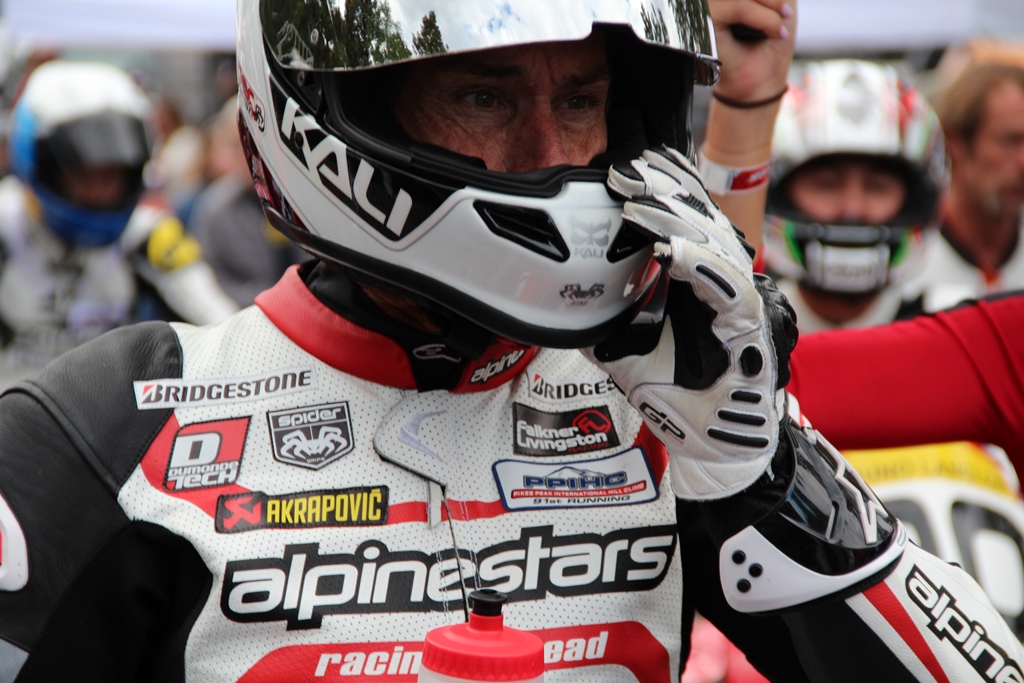
MLAS: Do you have advice for people who are interested in trying endurance cycling?
MD: There are so many different places to go and get information about it. The one thing that is most important is that you don’t try to take too big of a bite the first time. As it turns out, you’ve got a lot of time to work on your endurance and build up to doing a long, ultra-endurance type of event. Everybody’s probably got their idea of what they would call an epic mark. Like I’m going to do 500 miles or maybe it’s 50 miles and you just need to understand what you’re going to do to yourself. How to work up to things and to build and to rest, and to take care of the simple things like your diet and your preparation. If you’re doing it on a bicycle, where you’re going to ride, who you’re going to ride with, what type of mileage you want to do and how much you want to climb. I guess you just have to take steps and make goals and chip away at them, and listen to other people that are always going to be able to offer you (help). The endurance cycling community has been pretty open to everybody I think and continues to be. It was pretty amazing, not that it was team work by any means between competitors but they help each other. I saw them do it! It’s tragic to see somebody work as hard as you at something and fail at it or have to quit. So a lot of those people are there doing it and can offer you some advice, and they seem to be able to share a bunch of information.
When I started to want to ride longer rides, I kind of made up things I wanted to do on my own and I still do but I wouldn’t have had those ideas and been able to set those benchmarks without some of the reading that I did, and some of the research that I’ve done on other endurance cyclists; and I’m learning that there’s people out there that have a more, they’re not competing against other cyclists but they’re competing against terrain or point-to-points and mountain ranges and distances themselves. I couldn’t even guess as to how many people have ridden a bicycle across the country solo with nothing, and set out and did it for some kind of, for lack of a better phrase, a mid-life crisis or monumental change in their life, gone and done something drastic or created an adventure for themselves that wasn’t about getting fame of fortune or recognition. It was to accomplish something, to dig in to who they really were and live in that moment, and there are a lot of them.
There are a lot of people that do amazing journeys and intense, like a full throttle doing things that are just ridiculous. Those people out there aren’t seekers of recognition, fame or anything. They’re doing it for other reasons, but they’re out there and they’re doing things that are incredible. So everybody’s got their own reason for doing it. This opportunity was born by that book. I didn’t say it but Brenda was here and it was the topic of my conversations all the time, and she was just tired of it. We’ll sit down to dinner and she’s like, “I ain’t listening about Jure Robic tonight! So if you want to talk about him, you’re going to have to call somebody.” It set that goal inside of me. The Race Across America – I want to accomplish it. I don’t need to win it. I don’t need to set a record – not any of that. I just need to live it and that for me is my motivation and what I want to achieve. Other people are doing things that are quite amazing and I know that there’s probably a record for this. An actual mark for somebody riding from San Francisco to Los Angeles and it’s a beautiful road. It’s super nice. I would like to do something like that just for myself and just do it non-stop and see how long it takes, and then take a big rest. But there’s so many interesting things that happen in your mind and through your body and I would suggest to anybody thinking about doing it, think about not doing it and how that’s going to be a bummer. So if you think about doing something like that, just start doing it.
A Final Word
Epic is an overused adjective that best describes this undertaking but that’s exactly what it is. Micky Dymond’s enthusiasm is infectious and following this team’s progress will be a real treat. Their start of the Race Across America will be on Saturday June 14th at the Oceanside Pier overlooking the Pacific Ocean. Their finish which should be by Friday June 20th (fingers and toes crossed) at the historic downtown of Annapolis, Maryland. They’ve been training intensely for this race and as you can imagine, these guys don’t know how give anything less than 100% in everything they do. You can be part of their effort by making a donation or applying to sponsor the team at http://www.gofundme.com/legendsoftheroad. Of course, you can follow up with their progress and connect with Micky via the following social media channels:
Facebook profile: https://www.facebook.com/micky.dymond
Twitter Account: https://twitter.com/MickyDymond
Instagram: http://instagram.com/mickydymond#

